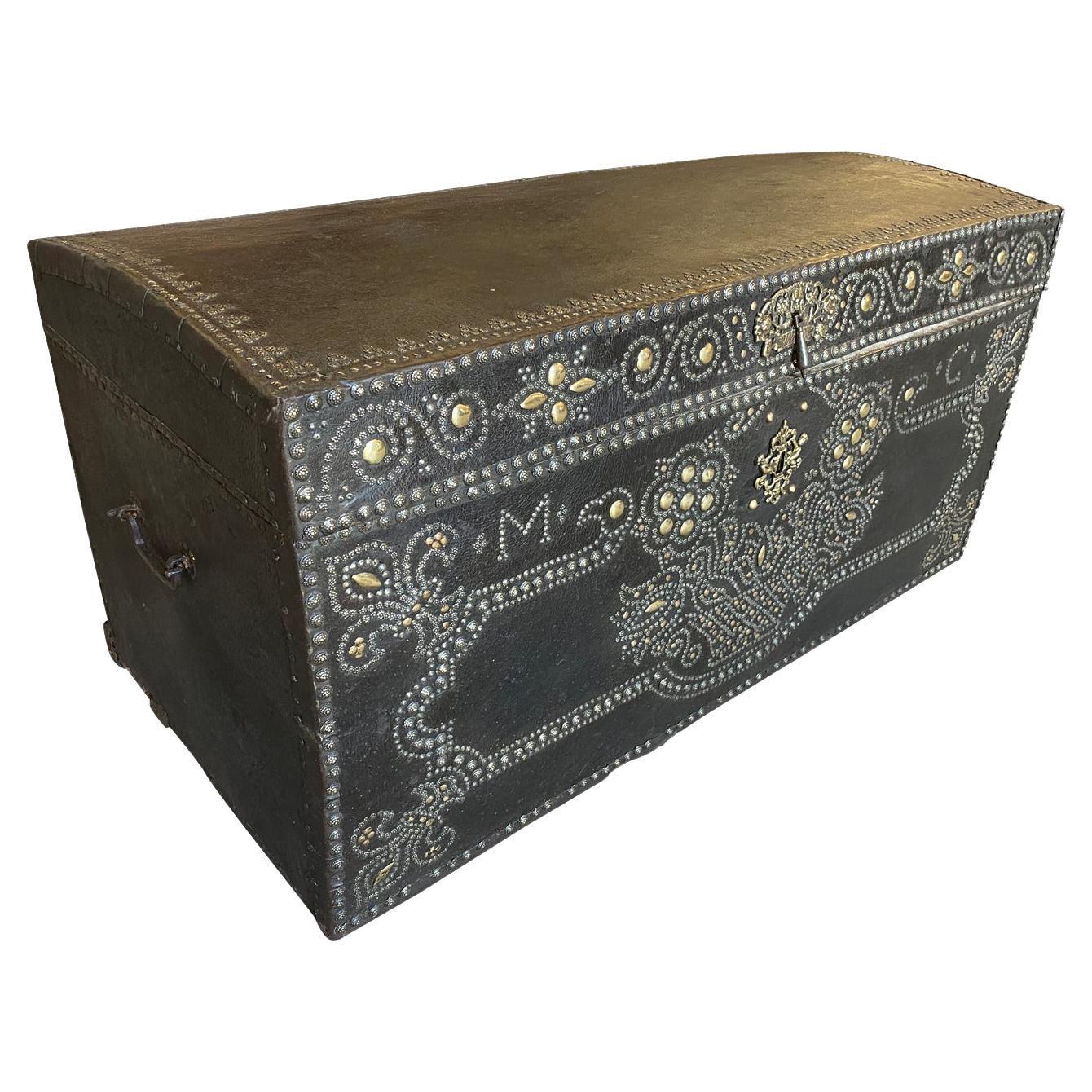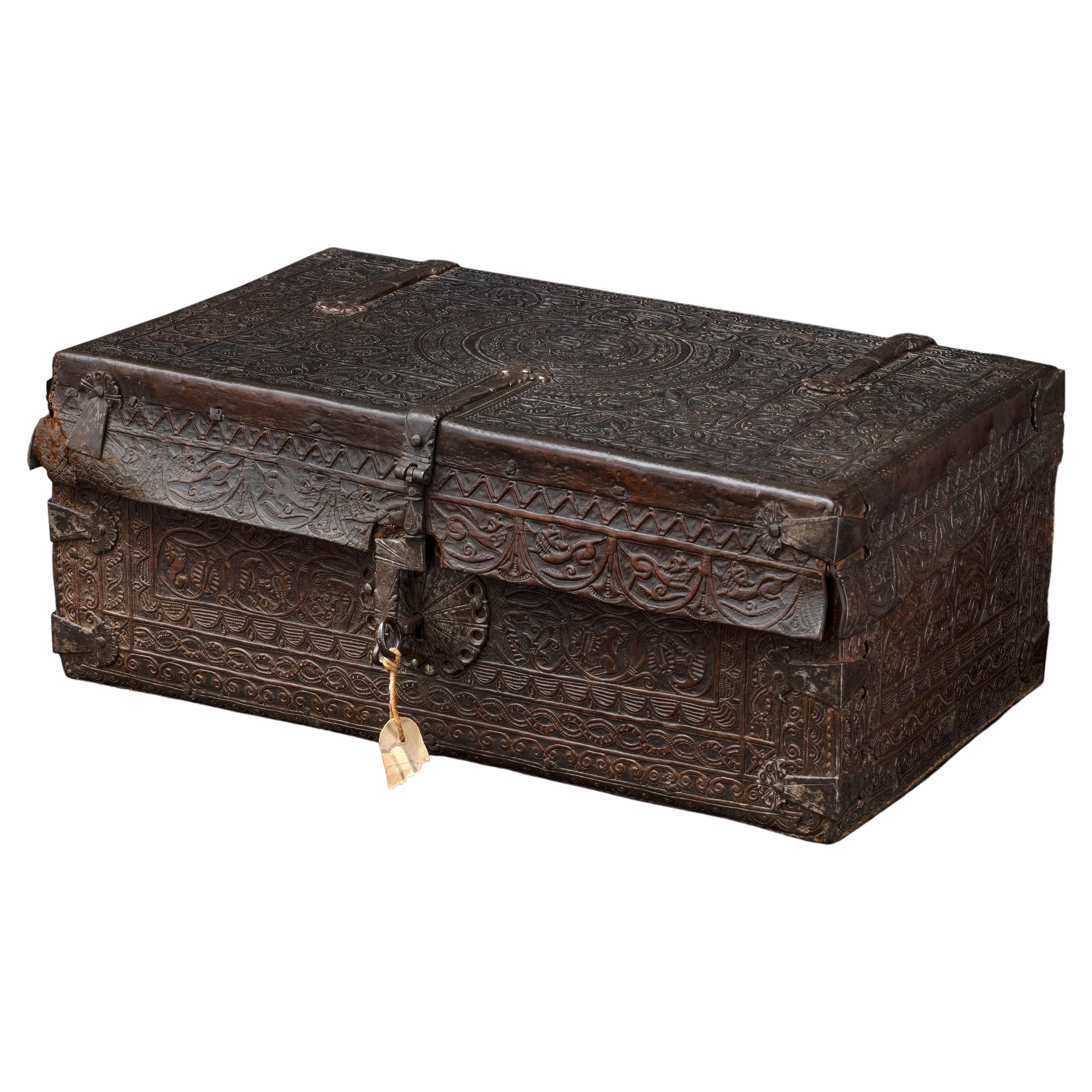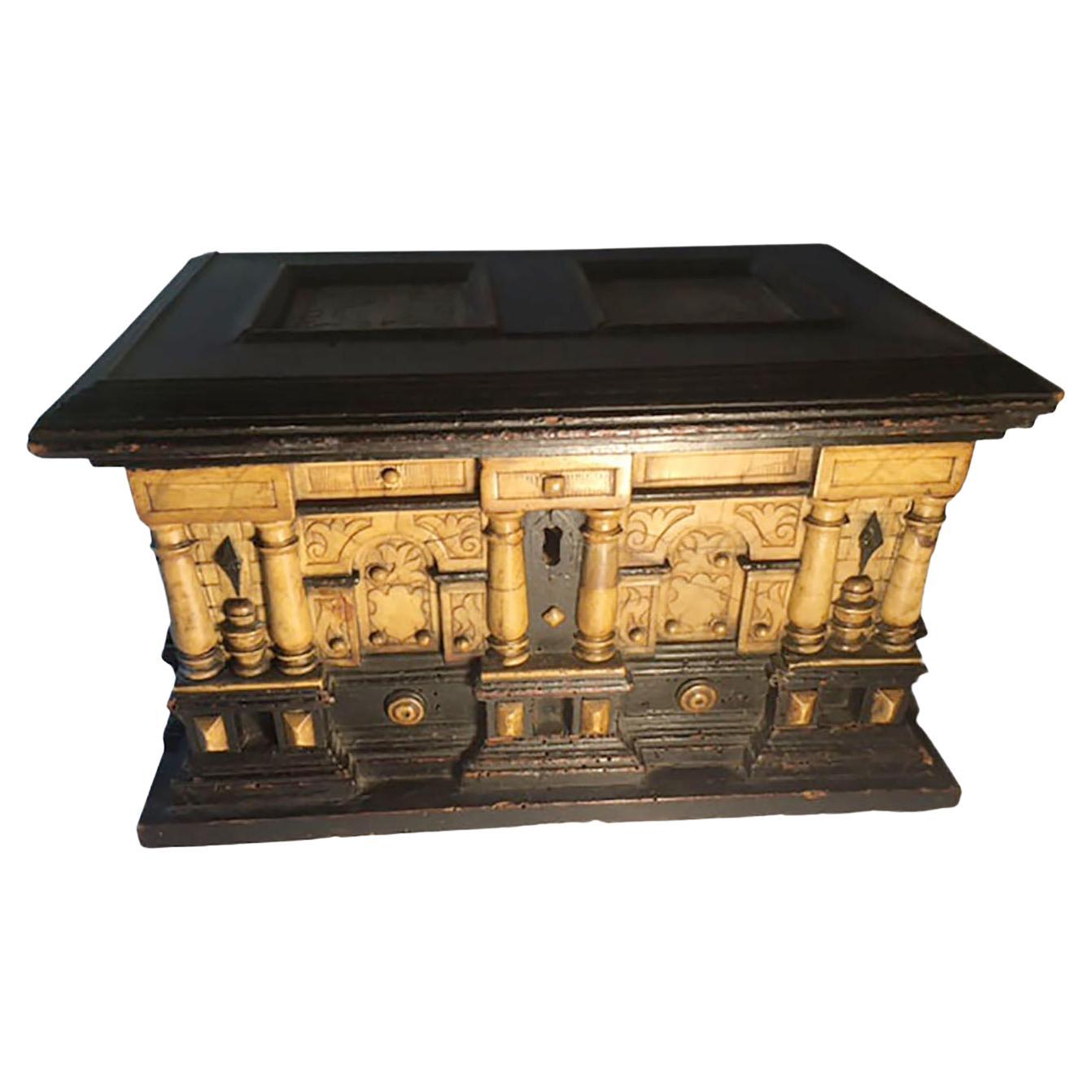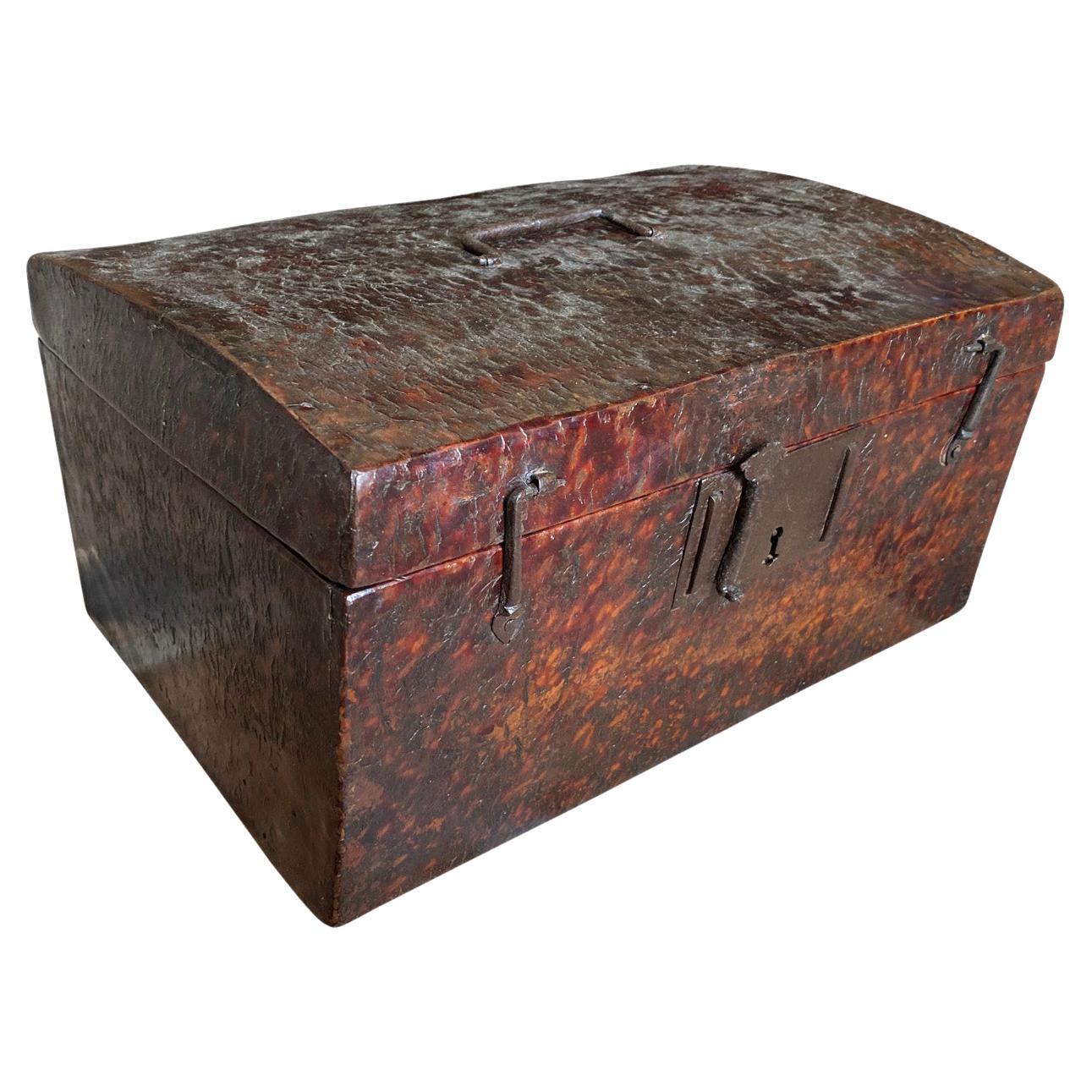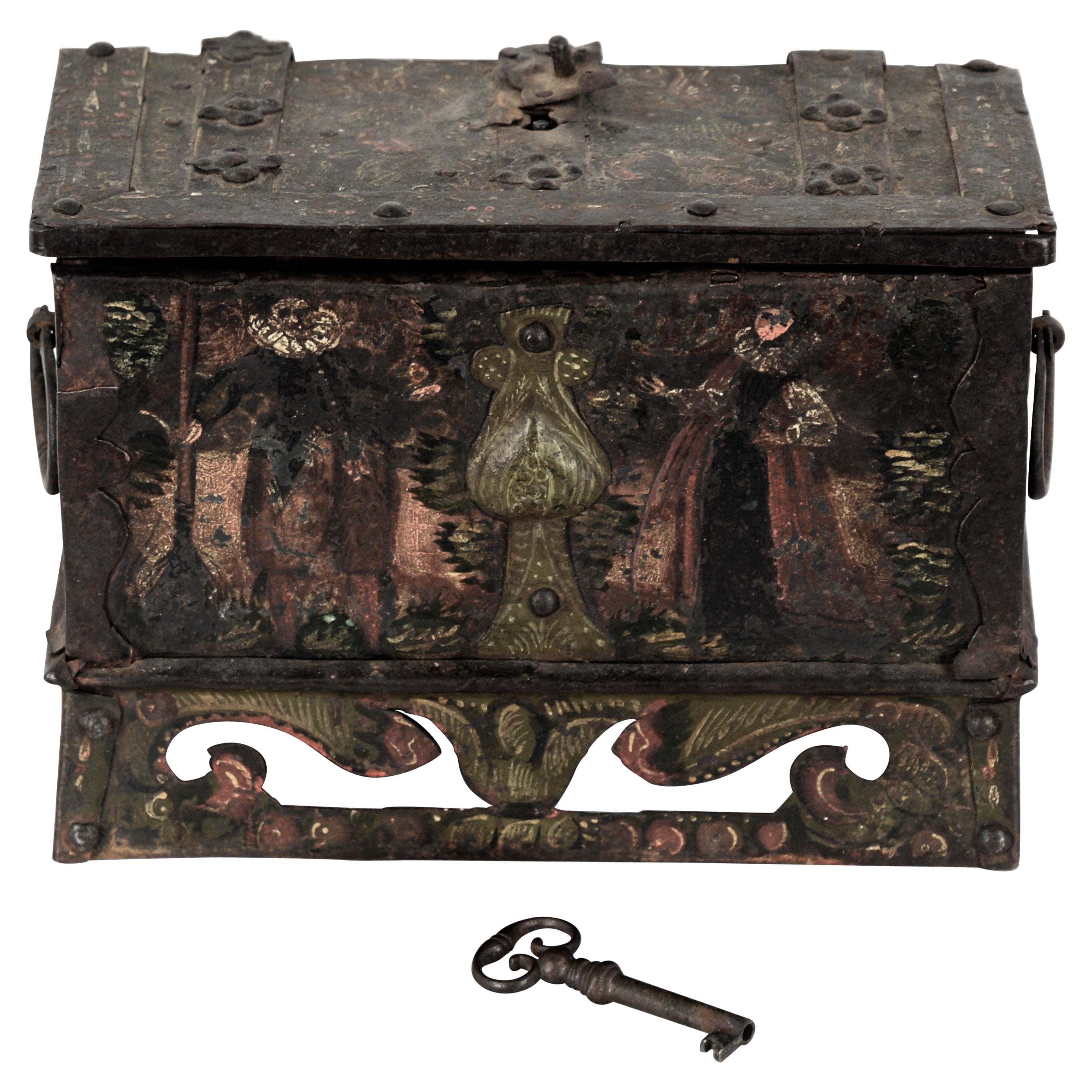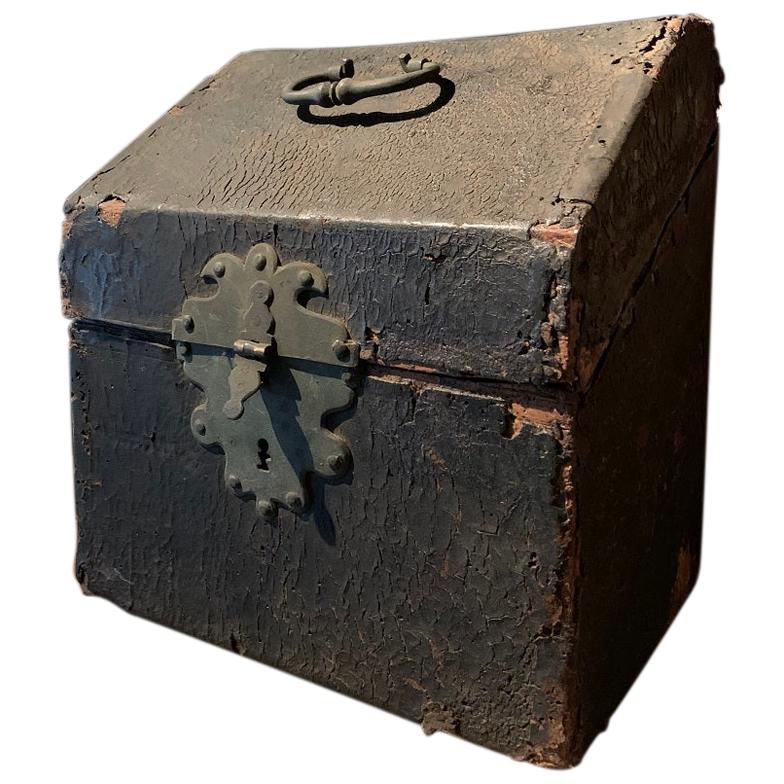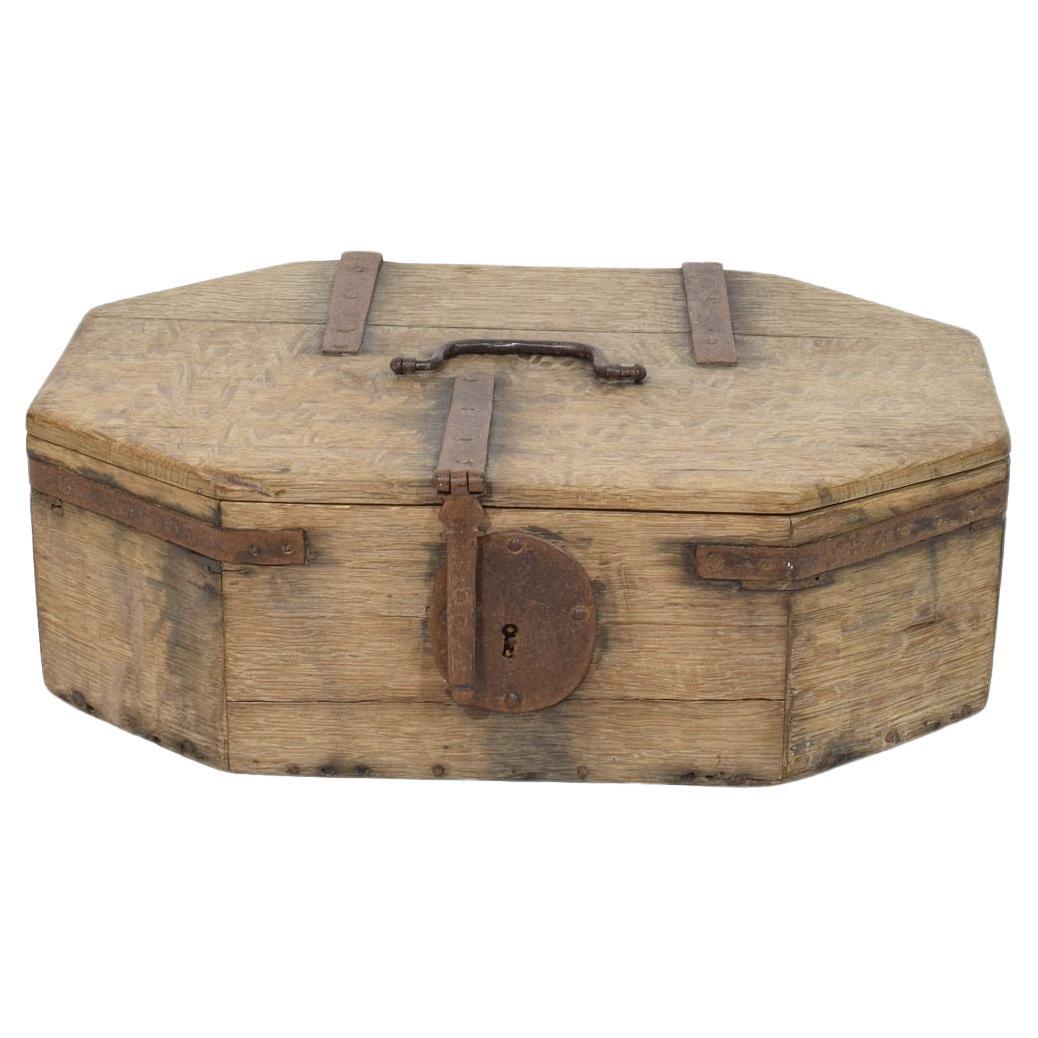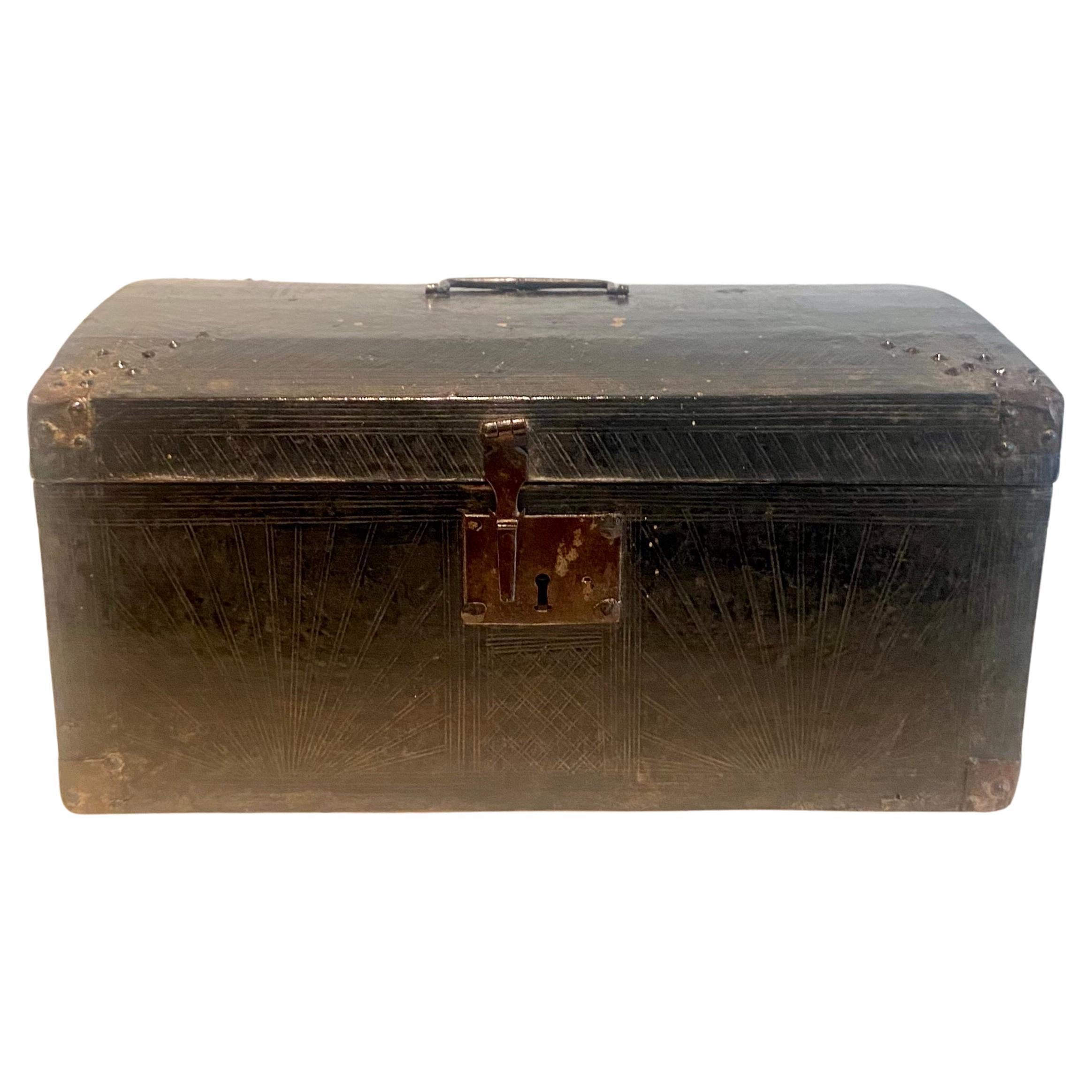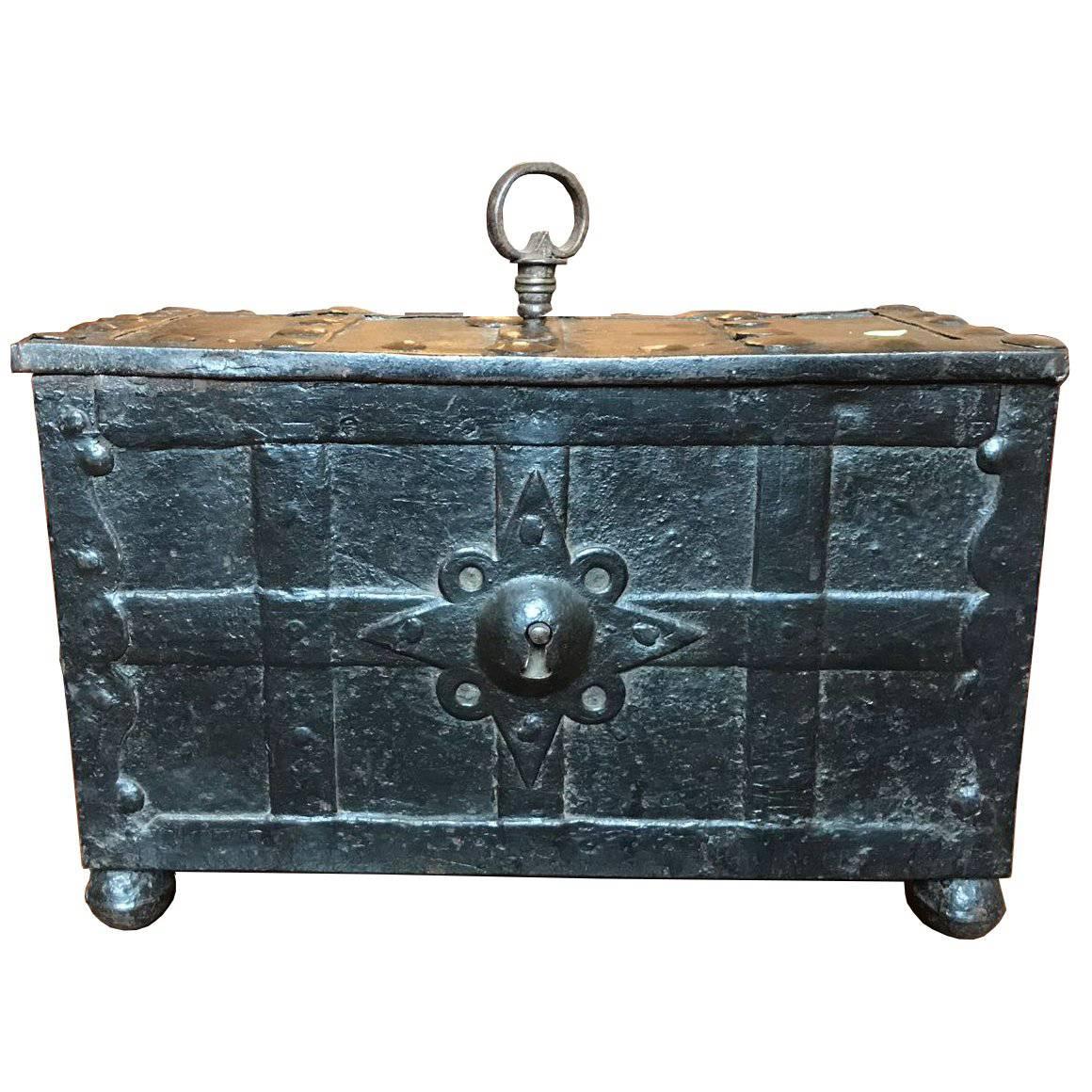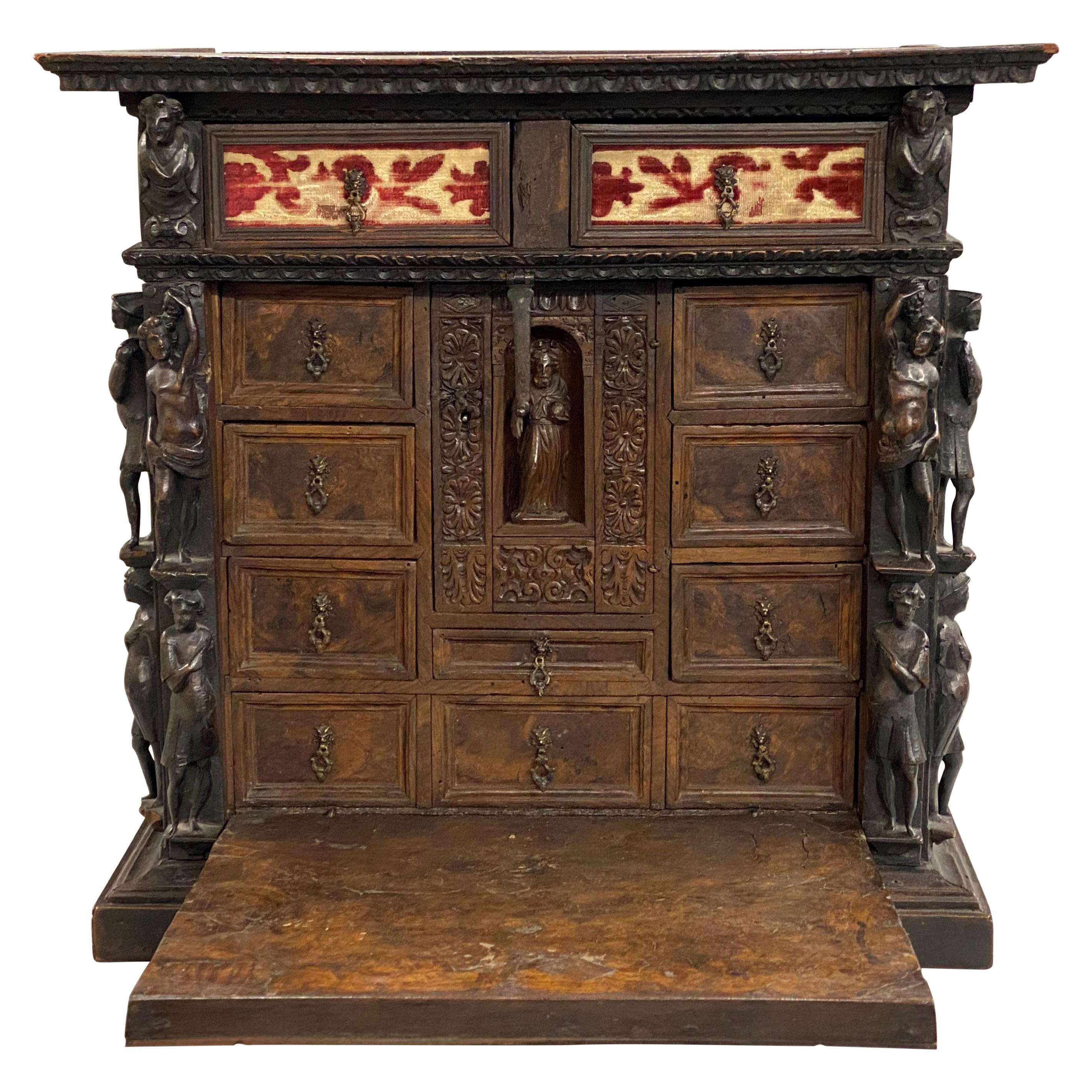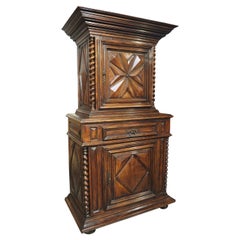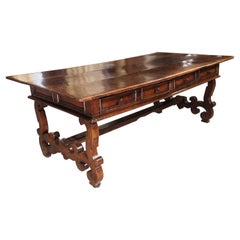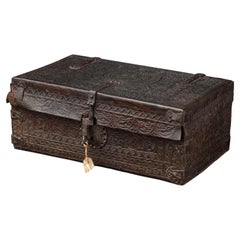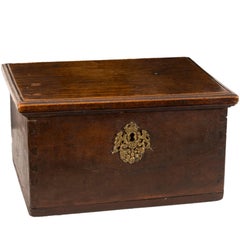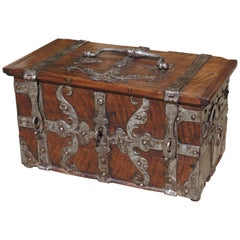
17th Century Walnut Wood and Iron Table Trunk, France
View Similar Items
Want more images or videos?
Request additional images or videos from the seller
1 of 11
17th Century Walnut Wood and Iron Table Trunk, France
About the Item
- Dimensions:Height: 10.25 in (26.04 cm)Width: 18 in (45.72 cm)Depth: 10.5 in (26.67 cm)
- Materials and Techniques:
- Place of Origin:
- Period:
- Date of Manufacture:1600s
- Condition:Wear consistent with age and use. Minor losses. Very good. Old nicks, age separations and scratches; missing right side circular handle all commensurate with age of 17th Century.
- Seller Location:Dallas, TX
- Reference Number:Seller: 417-681stDibs: LU90638976241
About the Seller
5.0
Platinum Seller
These expertly vetted sellers are 1stDibs' most experienced sellers and are rated highest by our customers.
Established in 1983
1stDibs seller since 2011
738 sales on 1stDibs
More From This SellerView All
- 18th Century Domed and Studded Leather, Brass, and Wood Trunk from FranceLocated in Dallas, TXBeautifully designed and highly portable, this French domed top trunk was constructed by hand with a wooden body enveloped in chocolate-colored leather. The trunk, which dates to the...Category
Antique 18th Century French Decorative Boxes
MaterialsMetal, Brass
- 17th Century French Walnut Wood Buffet Deux CorpsLocated in Dallas, TXThis unique buffet deux corps was hand-carved from walnut wood in France during the Louis XIII period (1600’s). A buffet deux corps (literally “two body buffet”) is a two-tiered cabi...Category
Antique 17th Century French Louis XIII Buffets
MaterialsWalnut
- Late 17th Century Italian Walnut Wood Library TableLocated in Dallas, TXThis majestic library table was hand-carved in Italy during the late 1600’s. Three planks of rich walnut wood comprise the top that has been carved with a thin recessed molding along...Category
Antique Late 17th Century Italian Baroque Desks and Writing Tables
MaterialsWalnut
- 17th Century Spanish Walnut Wood Table with Single Plank TopLocated in Dallas, TXA beautifully crafted wooden table from Spain, the walnut was hand-carved at the end of the Renaissance (in the 1600’s). As is the case with most Spanish Renaissance tables, the 1 ½” thick single plank top rests upon tightly turned legs. The edges of the top do not have molding or carvings but receive added character from the large dovetail grooves that were used to construct the table. This table has framing beneath the top plank which houses three horizontally aligned drawers. Each drawer façade has an iron escutcheon in the shape of shield with two engrailed top edges. The keyplate is set within a foliate margent that is surrounded by several layers of molding. Identical carvings and iron plates can be seen on the opposite side of the table, which has faux drawer fronts. Beneath the belt are four turned legs connected by an H-stretcher. Our 17th century Spanish walnut table...Category
Antique 17th Century Spanish Sofa Tables
MaterialsMetal, Iron
- A Wide 17th Century Winged Angel in Carved Walnut Wood from FranceLocated in Dallas, TXAt over four feet wide, this winged angel carving has an impressive span. Hand-carved in walnut in France during the 1600’s, the sculpture depicts the i...Category
Antique 17th Century French Wall-mounted Sculptures
MaterialsWalnut
- Unusual Carved Walnut Wood Inkwell from France, Circa 1880Located in Dallas, TXHand-carved from walnut in France, circa 1880, this unusual inkwell features foliate and floral motifs. A flip-top lid adorned with a pair of bas relief flowers tops the central pen ...Category
Antique 1880s French Inkwells
MaterialsWalnut
You May Also Like
- Exceptional French 17th Century Marriage TrunkLocated in Atlanta, GAAn exceptional 17th century Marriage Trunk - Malle - from the Provence region of France. Soundly constructed from wood and clad in leather. Beautifully ...Category
Antique 17th Century French Trunks and Luggage
MaterialsLeather
- Boiled Leather Trunk, Spanish, 17th CenturyLocated in Bruxelles, BELeather trunk Spanish, 17th century Boiled Leather, wood and iron Measures: 22 x 53 x 32 cm. Provenance : - collection Metz-Noblat, Château de Clevant, France Rectangular trunk of the form and size of a small suitcase with wrought iron hinges and lock-plate. Wood, covered with leather, cut and embossed with every surface of the thick cow hide covered in interlace, zoomorphic features. The construction method is boiled leather, often referred to by its French translation cuir-bouilli: a process used to change flexible, vegetable-tanned leather into rigid, moulded objects. For shaping of the vegetable-tanned leather, heat and moisture were used, as indicated by the term boiled leather. No written medieval sources describing the production of decorated cuir bouilli objects survive, so knowledge of the process relies on the important studies of the Scottish leather historian John William Waterer. A large range of methods, materials and techniques could be used in various combinations. The vegetable-tanned leather, made supple with moisture and heat, was stuffed, shaped and nailed to the rigid wooden coffer support. The stuffing material was probably modeled beeswax or stearin wax. To shape the leather, to create its topography, « Cushions » were made by lacing a thread through an awl hole and attaching the flexible leather and stuffing to the rigid wooden support on the bottom. Then the decoration was done: lines were incised through the upper layer of the leather (epidermis) with different thicknesses of knives or needles. Contours were created with deep v-shaped cuts, decoration with thin incision and final details with a needle point. For the incision and pouncing stage, the leather was probably kept heated and moistened for suppleness. Once dry, the leather would be hard and rigid. the saturated leather is worked over a form, possibly even damp sand, with the pattern shaped using bone or wooden tools. Compare to metal, leather was lighter and it offered protection from cuts and punctures. Cuir bouilli objects were produced by specialist leather workers and needed skillful craftsmanship. The surface is filled with roundels shaped foliages enclosing animals, lions and peacocks. The foliate arabesques creating a vegetal connection tweet the animals create the impression of a lush verdant space . The vegetal pattern here employed in combination with geometrical pattern came from the pre-islamic artistic traditions of the Byzantine and Sasanian empires. An aspect of Islamic geometry Is the basic symmetrical repetition and mirroring of the shapes that create a sense of harmony. The decoration of this truck is inspired by the islamic « arabesque » a form of vegetal ornament composed of spirals, intertwining plants and abstract curvilinear motifs. An arabesque character is given to the birds of the decorations through extreme stylisation. This arabesque maintained the classical tradition of median symmetry, freedom in Detail and heterogeneity of ornament. The presence of the peacocks is a paradisiacal allusion: in popular Islamic literature they were among the original inhabitants of the garden of Paradise expelled with Adam and Eve. Peacock as a decorative motif may have originated in the West, despite their eastern provenance. There was an ancient belief that the flesh and feathers of peacock do not decay. This led to the peacock becoming a christian symbol for Christ’s resurrection. Renowned for their decorative wall hangings, seventeenth-century Spanish leatherworkers also produced utilitarian objects, such as this trunk. A similar trunk is on display at the Metropolitan museum of art ( 09.158.1). Related literature : Davies L. 2006. Cuir bouilli. Conservation of leather and related materials, 94-102, Oxford: elsevier Butterworth-Heinemann Grabar, Oleg. The Mediation of Ornament. Princeton: Princeton University Press, 1992 Gabriela Germana Roquez, "El mueble en el Peru en el siglo XVIII...Category
Antique 17th Century Decorative Boxes
MaterialsIron
$13,812 Sale Price30% Off - Walnut and Metal Small Chest, 17th CenturyLocated in Madrid, ESSmall rectangular ark with a flat lid, with a lock of golden metal worked (crown on two facing lions, located on a garland of great size, and all around a symmetrical composition wit...Category
Antique 17th Century European Baroque Jewelry Boxes
MaterialsMetal
- 17th Century, Alabaster and Ebonised Wood Casket Malines CofferLocated in Dallas, TXA 17th century Malines alabaster and ebonised wood coffer or casket with engraved inset panels, arches and columns. The interior has a marbled paper lini...Category
Antique 17th Century Belgian Decorative Boxes
MaterialsAlabaster
- French 17th Century Leather Box, CoffreLocated in Atlanta, GAA very charming late 17th century French Coffre - Box crafted from beautifully patina'd leather. A wonderful piece to serve as a jewelry box or to adorn any table top.Category
Antique 17th Century French Decorative Boxes
MaterialsLeather
- 17th Century Nuremberg, German Iron Strongbox Jewels CasketLocated in Soquel, CAOrnately painted cash box with iron hardware and key, on the original stand. Interior of box measures 8"W x 4"H x 3.75"D Exceptional, small, late-renaissance, table-top, Nuremberg, iron, 'Wedding Box', strongbox or travelling safe with its original, naïve, painted decoration This is a rare and small example of these characterful, early models of transportable safes. The much larger traditional chest...Category
Antique 17th Century German Jacobean Decorative Boxes
MaterialsWrought Iron, Iron
$3,080 Sale Price20% Off
Recently Viewed
View AllMore Ways To Browse
Antique Trunk Locks
17th Century Lock Box
Coffret Coffret
Iron Bound Trunk
Fleur De Lis Box
Coffret Antique
Antique Furniture Sri Lanka
Sri Lankan Antique Furniture
Marquetry Inlaid Box
Sri Lanka Antique Furniture
Antique Sri Lanka Furniture
English Inlayed Box
Morrocan Box
German Hand Painted Box
Retro Shell Boxes Shell Boxes
Amber Box
Amber Boxes
Tortoiseshell Designs
